
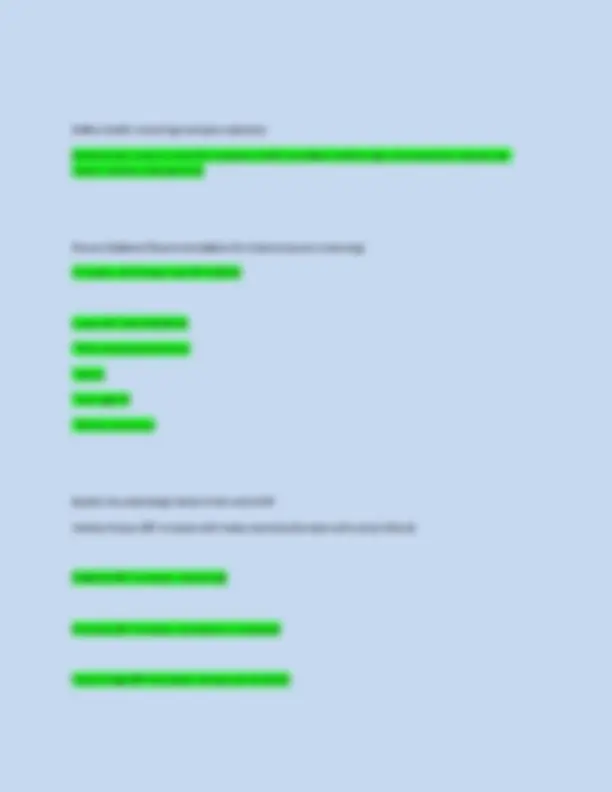
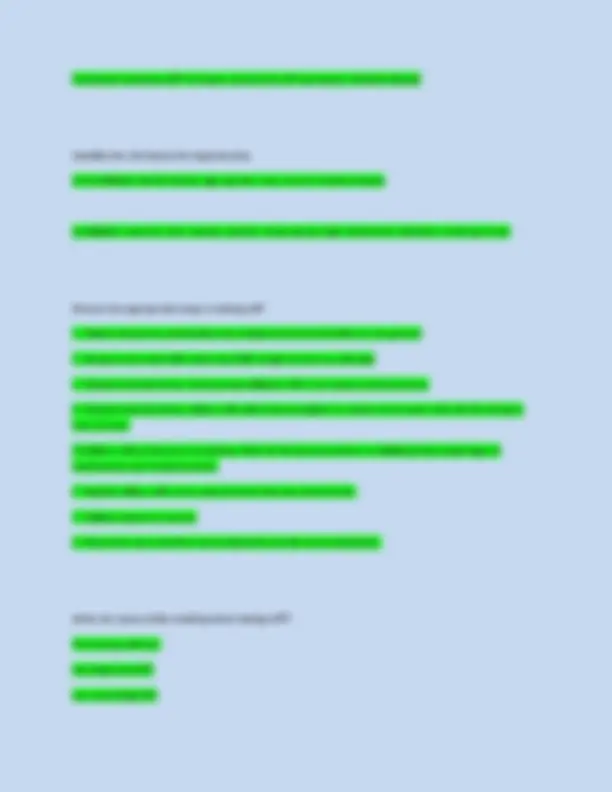
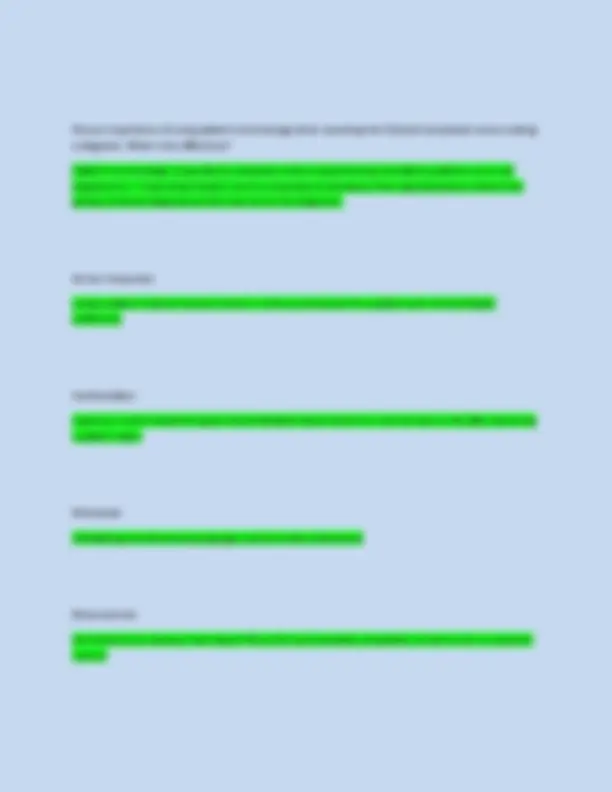

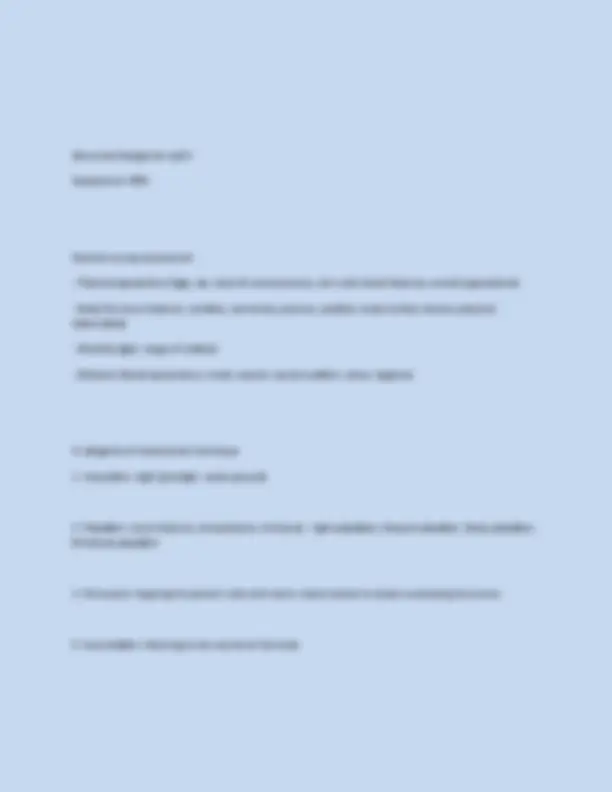
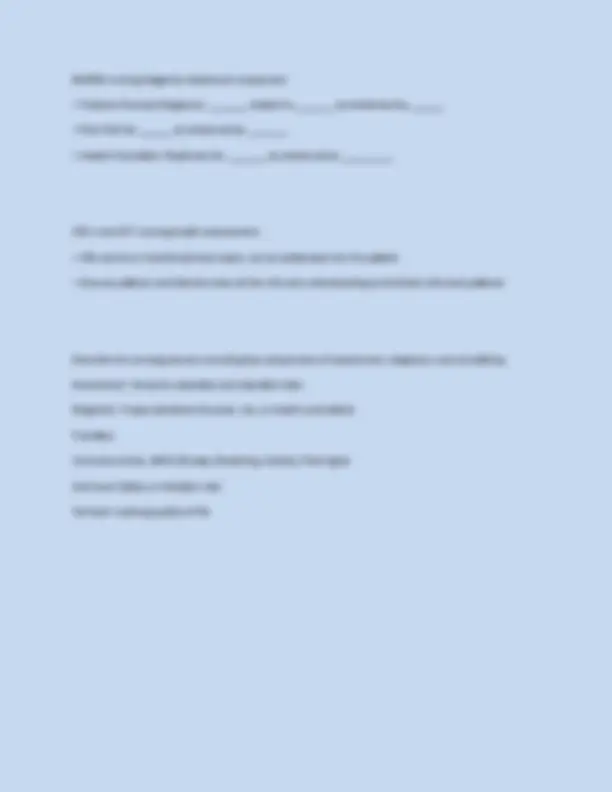


Study with the several resources on Docsity

Earn points by helping other students or get them with a premium plan


Prepare for your exams
Study with the several resources on Docsity

Earn points to download
Earn points by helping other students or get them with a premium plan
Community
Ask the community for help and clear up your study doubts
Discover the best universities in your country according to Docsity users
Free resources
Download our free guides on studying techniques, anxiety management strategies, and thesis advice from Docsity tutors
Nurs 503 Exam 1theoretical Foundations Of Nursing Exam Questions With Detailed Answers 100% Quaranteed.
Typology: Exams
1 / 10

This page cannot be seen from the preview
Don't miss anything!







Describe how and why we perform Health Assessments
It is a methodical way by systems- head-to-toe assessment
Completed when patient comes in with problem/used to gather data to lead to a diagnosis/health screenings
Describe the Nursing Process, including key components of assessment, diagnosis, and prioritizing for the plan of care
Assessment
Diagnosis
Planning
(Including outcome identification)
Implementation
Evaluation
Discuss how EBP may be used in health care
The emphasis on research, experience, patient preference and assessment (subjective/objective data)
Describe the key components of a complete health history
Biographical data
Source of history (reliability)
Reason for seeking care (chief compliant)
History of Present Illness or Present Health
Past Health (Past Medical History)
Family Medical History
Review of Systems
Functional Assessment (including Social History)
Describe core components of nursing documentation
Subjective Data (History - What the patient says)
Objective Data (Physical exam findings
Laboratory or diagnostic test results)
Assessment (Nursing diagnoses)
Plan (what the nurse will do)
*Ideal Documentation - be thorough, concise, use appropriate terminology.
*Be truthful and factual, use 5 senses - Do NOT say "normal", say "Lung sounds are CLEAR"
Peripheral resistance (BP increases-constricted, BP decreases- dilated/relaxed)
Identify the risk factors for hypertension
Unmodifiable: family history, age, gender, race, chronic kidney disease
modifiable: exercise, diet, obesity, alcohol, sleep apnea, high cholesterol, diabetes, smoking, stress
Discuss the appropriate steps in taking a BP
5.Deflate cuff quickly and completely. Wait 15-30 seconds before re-inflating.Place diaphragm of stethoscope over brachial artery.
what can cause a false reading when taking a BP?
The wrong cuff size:
too large (Low BP)
too small (High BP)
Discuss importance of using patients terminology when recording the CC(chief complaint) versus making a diagnosis. What is the difference?
Patient's terminology is typically the symptoms they're experiencing. Sometimes patients try to self diagnose (i.e. "I have strep throat"), but it is important to ask about their signs/symptoms rather than giving a medical diagnoses as that may not be the diagnoses.
Ad hoc interpreter
using a patient's family member, friend, or child as interpreter for a patient with limited English proficiency
Confrontation
response in which examiner gives honest feedback about what he or she has seen or felt after observing a patient action
Elderspeak
infantilizing and demeaning language used by health professional
Ethnocentrism
the tendency to view your own way of life as the most desirable, acceptable, or best to act in a superior manner
instrument that illuminates the ear canal, enabling examiner to look at ear canal and tympanic membrane
Normal Range BP
BP < 120/
Abnormal Range BP
Prehypertension: 120-129 / <
Stage 1: 130-139 / 80- 89
Stage 2: ≥ 140/ ≥ 90
Hypotension: < 95 / 60
Orthostatic hypotension: laying - > standing looking for a decrease in SBP by 20 and DBP by 10, increased Pulse
Normal Temperature Ranges
Oral: 96.4-99.1 F
Rectal & Tympanic: 0.5-1.0 F higher than oral
Axillary & Temporal: 0.5-1.0 F lower than oral
Abnormal Temperature Ranges
Hypothermia <95 F
Hyperthermia >99.5 F
Normal Ranges for HR
50 - 95 bpm
Abnormal Ranges for HR
Bradycardia <50 bpm
Tachycardia >100 bpm
Normal Ranges for RR
12 - 20 rpm
Obese adults: 12-22 rpm
Abnormal Ranges for RR
Bradypnea ≤ 10 rpm
Tachypnea ≤ 24 rpm
Normal Ranges for spO
95 - 99%
NANDA nursing diagnosis statement component
CNL's role R/T nursing health assessments
Describe the nursing process including key components of assessment, diagnosis, and prioritizing
Assessment: interpret subjective and objective data
Diagnosis: 3 types (problem-focused, risk, or health promotion)
Prioritize:
1st level priority: ABCV (Airway, Breathing, Cardiac, Vital signs)
2nd level: Safety or Infection risks
3rd level: Lacking quality of life